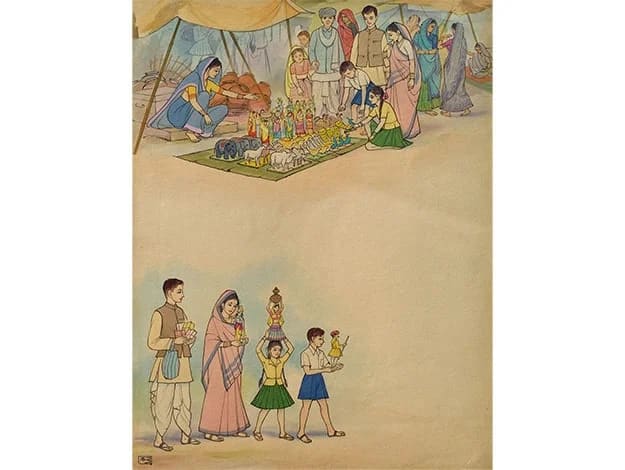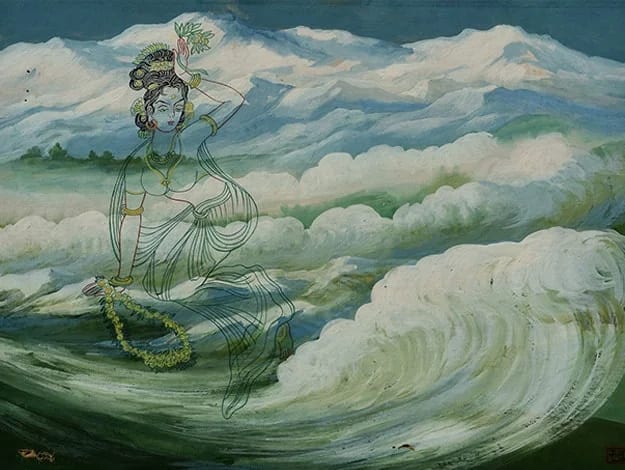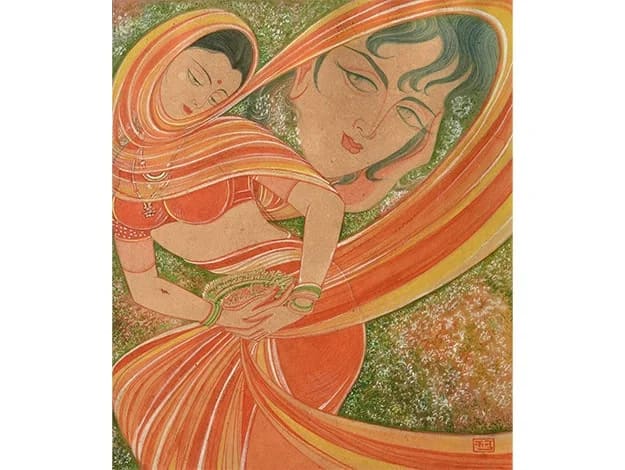Kanu Desai was an Indian painter and Art director. He was born in Bharuch and later went on to live in Ahmedabad. During Mahatma Gandhi's speech to the Indian National Congress gathering in Ahmedabad in 1920, he offered his services. In 1922, he began studying painting with Ravishankar Raval. He was influenced by Bose and Rabindranath Tagore. He received a Gujarat Vidyapith scholarship and was sent to Shantiniketan to study under Nandalal Bose in 1925. He took part in Gandhi's "Dandi March" in 1930 and created a number of paintings to capture the occasion. Later, he started drawing silhouettes which inspired his Art Direction in Indian films. His paintings and drawings have a clean and confident linearity that sets him apart from the rest. They are completely theatrical and romantic in action. His silhouette paintings, especially those of female forms, have an effect on his style of art direction. Large framed paintings were used to create his set designs. He connects his directorial approach through his artworks.
He contributed to the pandal decor of the INC meeting in Haripura in 1937. Jeevan Mangal and Nritya Manjari are drawing albums featuring his artwork. He began designing book covers before moving on to designing sets for movies in Mumbai. He designed the sets for the 1945 motion picture Ram Rajya. Additionally, he has served as the art director for several movies, including "Jhanak Jhanak Payal Baaje," "Navrang," "Baiju Bawra," and "Bharat Milap."
He received the highest honor in Gujarati culture, Ranjitram Suvarna Chandrak in 1938. In 1957, he won a Filmfare Award for Best Art Direction for his work on "Jhanak Jhanak Payal Baaje." The Gujarat State Lalit Kala Academy gave him the Gujarat Gaurav Puraskar in 1965.
He passed away in 1980.




















